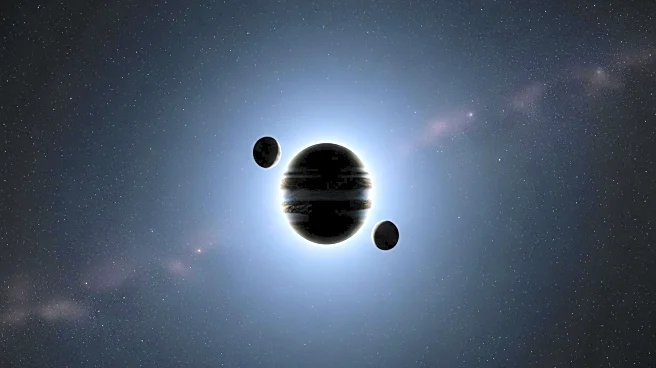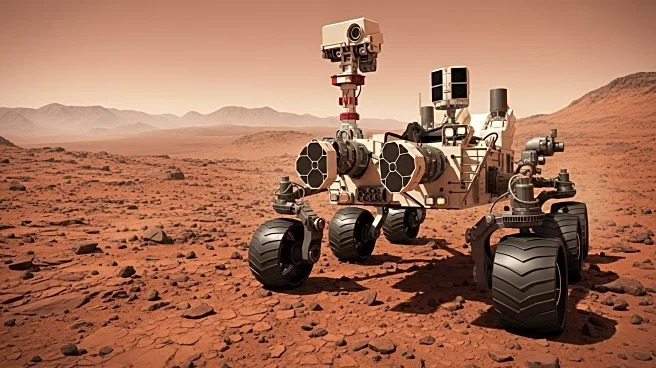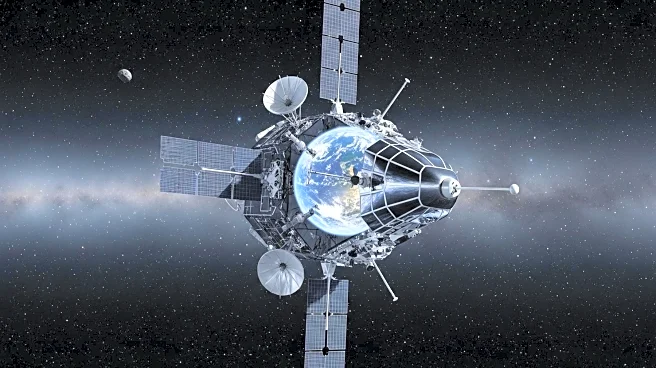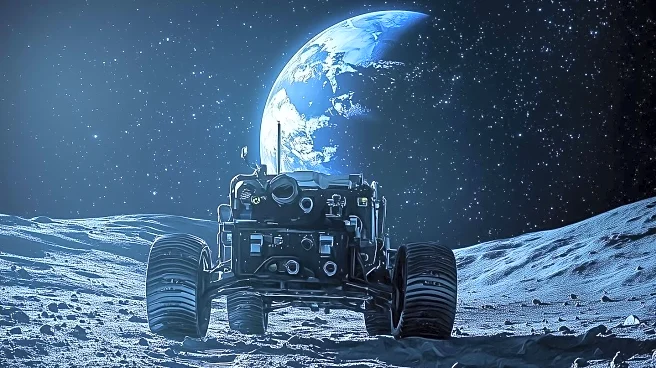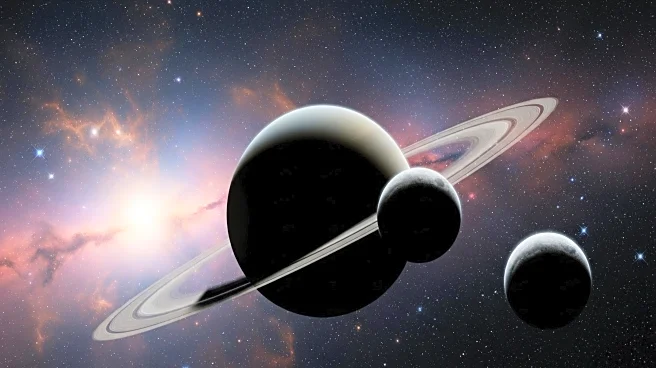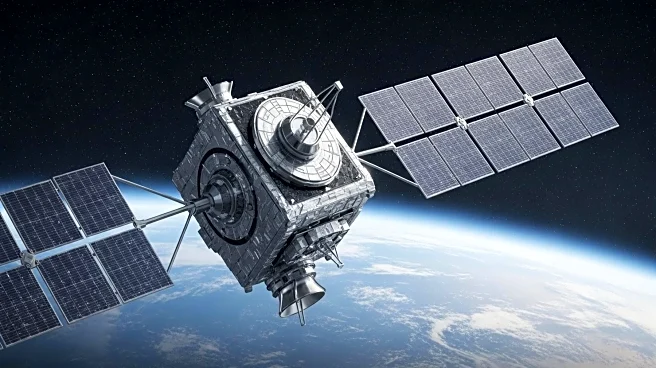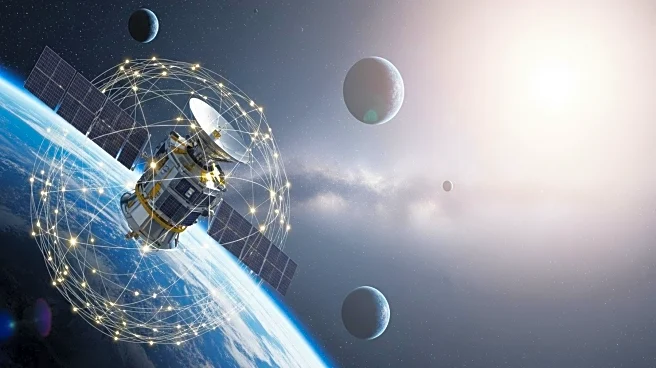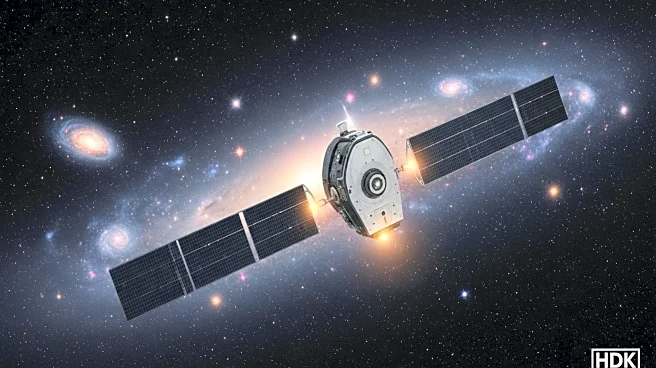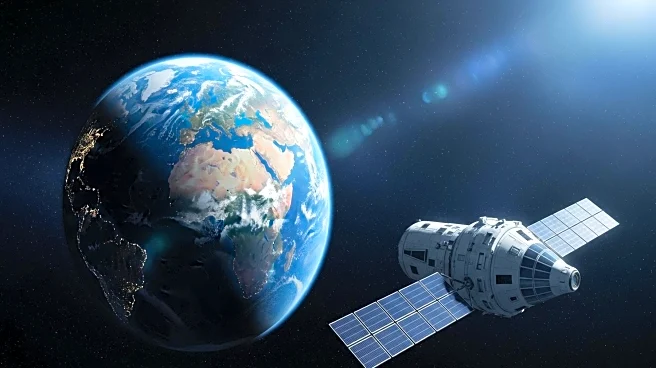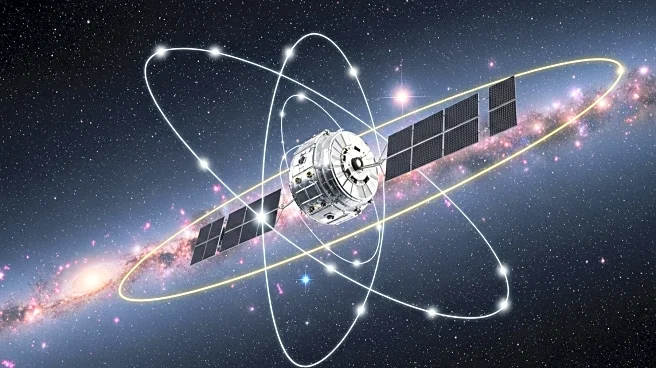What's Happening?
Jupiter's moons Io and Europa are set to overlap as they begin a rare transit across the gas giant. This celestial event occurs early in the morning, with the smaller moon Europa appearing in front of the larger Io. The transit begins at 4:04 a.m. EDT, with Europa's shadow slipping off the opposite limb 13 minutes later. Io, known for its volcanic activity, moves faster due to its closer orbit around Jupiter. By 5:03 a.m. EDT, Io's shadow disappears, and the two moons are well separated. The event is visible across the U.S., with Io's exit around 6:20 a.m. EDT, although the sky will be brightening on the East Coast. Europa's transit concludes around 5:53 a.m. CDT, coinciding with sunrise in the Eastern time zone.
Why It's Important?
This astronomical event is significant for both amateur and professional astronomers, offering a unique opportunity to observe the dynamics of Jupiter's moons. Such transits provide insights into the orbital mechanics and physical characteristics of these celestial bodies. For the scientific community, these observations can contribute to a better understanding of the gravitational interactions between Jupiter and its moons. For the general public, it serves as an engaging way to connect with space science and foster interest in astronomy. The event also highlights the importance of maintaining telescopic equipment and observational skills to capture such fleeting moments.
What's Next?
Following this event, astronomers and enthusiasts will continue to monitor Jupiter and its moons for further transits and celestial phenomena. The data collected during these observations can be used to refine models of the moons' orbits and improve predictions for future events. Additionally, the interest generated by such events may encourage more public engagement with astronomy, potentially leading to increased support for space exploration initiatives.
Beyond the Headlines
The overlapping transit of Io and Europa underscores the intricate dance of celestial bodies within our solar system. It also highlights the advancements in observational technology that allow us to witness such events from Earth. This event may inspire discussions about the potential for future missions to Jupiter's moons, particularly Europa, which is considered a prime candidate for the search for extraterrestrial life due to its subsurface ocean.

